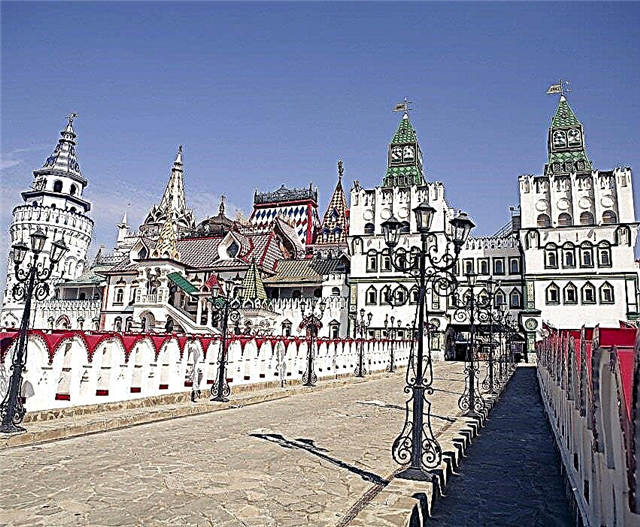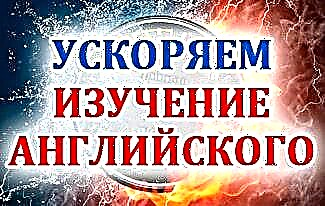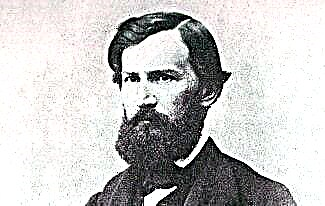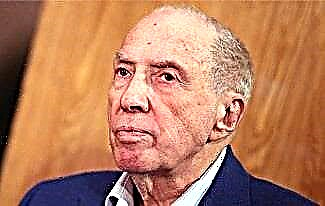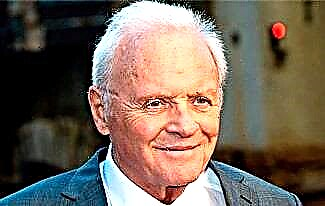For more than 300 years, Russia was ruled (with some reservations, as indicated below) by the Romanov dynasty. Among them were men and women, rulers, both successful and not very successful. Some of them inherited the throne legally, some not quite, and some wore the Cap of Monomakh for no apparent reason at all. Therefore, it is difficult to make any generalizations about the Romanovs. And they lived at different times and in different conditions.
1. The first representative of the Romanov family on the throne was the democratically elected Tsar Mikhail Fedorovich (1613 - 1645. Hereinafter, the years of reign are indicated in brackets). After the Great Troubles, the Zemsky Sobor chose him from several candidates. Mikhail Fedorovich's rivals were (perhaps without knowing it themselves) the English king James I and a number of foreigners of a lower rank. Representatives of the Cossacks played a key role in the election of the Russian tsar. The Cossacks received a salary of bread and were afraid that foreigners would take away this privilege from them.

2. In the marriage of Mikhail Fedorovich with Evdokia Streshneva, 10 children were born, but only four of them survived to adulthood. Son Alexei became the next king. Daughters were not destined to know family happiness. Irina lived 51 years and was, according to contemporaries, a very kind and well-meaning woman. Anna died at the age of 62, while there is practically no information about her life. Tatiana enjoyed quite a lot of influence under her brother's rule. She also found the era of Peter I. It is known that Tatiana tried to soften the tsar's anger towards princesses Sophia and Martha.
3. Tsar Alexei Mikhailovich (1645 - 1676) knowingly received the nickname "Quiet". He was a gentle man. In his youth, he was characterized by short-term bouts of anger, but in adulthood they practically stopped. Alexey Mikhailovich was an educated person for his time, was interested in science, loved music. He independently drew up military staffing tables, came up with his own design of the gun. During the reign of Alexei Mikhailovich, the Ukrainian Cossacks in 1654 were accepted into Russian citizenship.

4. In two marriages with Maria Miloslavskaya and Natalia Naryshkina, Alexei Mikhailovich had 16 children. Three of their sons were later kings, and none of the daughters married. As in the case with the daughters of Mikhail Fedorovich, potential suitors of suitable nobility were frightened off by the requirement for the mandatory adoption of Orthodoxy.
5. Fyodor III Alekseevich (1676 - 1682), despite his poor health, was a reformer almost cleaner than his brother Peter I, only without chopping heads with his own hands, hanging corpses around the Kremlin and other methods of stimulation. It was with him that European suits and shaving began to appear. The category books and localism, which allowed the boyars to directly sabotage the will of the tsar, were destroyed.

6. Fyodor Alekseevich was married twice. The first marriage, in which one child was born who did not live even 10 days, lasted less than a year - the princess died soon after giving birth. The tsar's second marriage lasted less than two months at all - the tsar himself died.
7. After the death of Fyodor Alekseevich, the favorite game of the Russian elite in succession to the throne began. In this case, the good of the state, and even more so of its inhabitants, the players were guided in the last place. As a result, the sons of Alexei Mikhailovich Ivan were crowned the kingdom (as the eldest, he got the so-called Big outfit and the Cap of Monomakh) and Peter (the future emperor got copies). The brothers even made a double throne. Sophia, the elder sister of the tsars, ruled as regent.
8. Peter I (1682 - 1725) became the de facto king in 1689, removing his sister from the reign. In 1721, at the request of the Senate, he became the first Russian emperor. Despite criticism, Peter is not called the Great for nothing. During his reign, Russia underwent significant transformations and became one of the most powerful states in Europe. From his first marriage (with Evdokia Lopukhina), Peter I had two or three children (the birth of Paul's son is in doubt, which gave rise to numerous impostors to declare themselves the son of Peter). Tsarevich Alexei Peter accused of treason and executed. Tsarevich Alexander lived only 7 months.

9. In his second marriage with Martha Skavronskaya, baptized as Ekaterina Mikhailova, Peter had 8 children. Anna married a German duke, her son became Emperor Peter III. Elizabeth from 1741 to 1762 was the Russian empress. The rest of the children died young.
10. Guided by genetics and the rules of succession to the throne, on Peter I the selection of facts about the Romanov dynasty could have been completed. By his decree, the emperor transferred the crown to his wife, and even granted the right to transfer the throne to any worthy person to all subsequent emperors. But any monarchy for the sake of maintaining the continuity of power is capable of very clever tricks. Therefore, it is officially believed that both Empress Catherine I and subsequent rulers are also representatives of the Romanovs, perhaps with the prefix "Holstein-Gottorp."
11. In fact, Catherine I (1725 - 1727) was granted power by the guards, who transferred their respect for Peter I to his wife. Their moods were fueled by the future empress herself. As a result, a group of officers burst into the Senate meeting and achieved unanimous approval of Catherine's candidacy. The era of female rule began.

12. Catherine I ruled for only two years, giving preference to various kinds of entertainment. Before her death, in the Senate, in the presence of irrepressible guards and high nobles, a will was drawn up, in which the grandson of Peter I, Peter, was declared the heir. The will was quite verbose, and while it was being drawn up, the empress either died or lost consciousness. Her signature, in any case, was absent on the document, and later the will was completely burned.
13. Peter II (1727 - 1730) ascended the throne at the age of 11 and died of smallpox at 14. The dignitaries ruled on his behalf, first A. Menshikov, then the Dolgoruky princes. The latter even wrote a forged will of the young emperor, but other interested parties did not accept the forgery. The Supreme Privy Council decided to summon the daughter of Ivan V (the one who ruled along with Peter I) Anna to reign, while limiting her power to special “conditions” (conditions).

14. Anna Ioannovna (1730 - 1740) began her reign very competently. Enlisting the support of the guards, she tore up the "condition" and dissolved the Supreme Privy Council, thus securing herself a decade of relatively calm rule. The fuss around the throne did not go anywhere, but the purpose of the struggle was not to change the empress, but to overthrow the rivals. The Empress, on the other hand, arranged expensive entertainment such as burning fountains and huge ice houses, and did not deny herself anything.

15. Anna Ioannovna handed over the throne to her niece's two-month-old son Ivan. By this, she not only actually signed the boy's death warrant, but also provoked a monstrous confusion at the top. As a result of a series of coups, power was seized by the daughter of Peter I, Elizabeth. Ivan was sent to prison. At the age of 23, the Russian “iron mask” (there was a real ban on the name and keeping of his portraits) was killed while trying to free him from prison.
16. Elizaveta Petrovna (1741 - 1761), who almost married Louis XV, made out of her court a semblance of a French one with ceremonies, gallantry and throwing money right and left. However, this did not prevent her, among other things, from establishing the University and restoring the Senate.

17. Elizabeth was a rather loving lady, but neat. All the stories about her secret marriages and illegitimate children remain oral legends - no documentary evidence remained, and she chose men who knew how to keep their mouths shut as her favorites. She appointed Duke Karl-Peter Ulrich Holstein as heir, forced him to move to Russia, convert to Orthodoxy (took the name Pyotr Fedorovich), followed his upbringing and chose a wife for the heir. As further practice showed, the choice of a wife for Peter III was extremely unfortunate.
18. Peter III (1761 - 1762) was in power for only six months. He began a series of reforms, with which he stepped on the corns of many, after which he was overthrown with enthusiasm, and then killed. This time the guards elevated his wife Catherine to the throne.

19. Catherine II (1762 - 1796) thanked the nobles who elevated her to the throne with the maximum expansion of their rights and the same maximum enslavement of the peasants. Despite this, its activities absolutely deserve a good assessment. Under Catherine, the territory of Russia expanded significantly, the arts and sciences were encouraged, and the system of state administration was reformed.

20. Catherine had numerous relationships with men (some favorites number more than two dozen) and two illegitimate children. However, the succession to the throne after her death went in the right order - her son from the unfortunate Peter III Paul became emperor.
21. Paul I (1796 - 1801) first of all adopted a new law on succession to the throne from father to son. He began to severely restrict the rights of the nobility and even forced the nobles to pay a poll tax. The rights of the peasantry, on the other hand, were expanded. In particular, the corvee was limited to 3 days, and the serfs were forbidden to sell without land or with the breaking of families. There were also reforms, but the above is enough to understand that Paul I did not heal for a long time. He was killed in another palace conspiracy.

22. Paul I was inherited by his son Alexander I (1801 - 1825), who knew about the conspiracy, and the shadow of this lay on his entire reign. Alexander had to fight a lot, under him Russian troops marched across Europe to Paris in triumph, and huge territories were annexed to Russia. In domestic politics, the desire for reform constantly bumped into the memory of his father, who was killed by a noble freewoman.

23. Matrimonial affairs of Alexander I are subjected to exactly opposite assessments - from 11 children born out of wedlock to complete sterility. In marriage, he had two daughters who did not live to be two years old. Therefore, after the rather sudden death of the emperor, in Taganrog, quite distant at that time, at the foot of the throne, the usual fermentation began. The emperor's brother Constantine renounced inheritance for a long time, but the manifesto was not immediately announced. The next brother Nicholas was crowned, but some of the disaffected military and noblemen saw a good reason to take power and staged a riot, better known as the Decembrist Uprising. Nicholas had to start his reign by firing cannons right in Petersburg.
24. Nicholas I (1825 - 1855) received the completely undeserved nickname “Palkin”. A man who, instead of quartered according to the then laws of all the Decembrists, executed only five. He carefully studied the testimony of the rebels in order to understand what changes the country needs. Yes, he ruled with a tough hand, first of all establishing tough discipline in the army. But at the same time, Nicholas significantly improved the position of the peasants, with him they prepared a peasant reform. Industry developed, highways and the first railways were built in large numbers. Nicholas was called the "Tsar Engineer".

25. Nicholas I had significant and very healthy offspring. Only father Alexander's favorite died at the age of 19 from premature birth. The other six children lived to be at least 55 years old. The throne was inherited by the eldest son Alexander.
26. Common People's Characteristics of Alexander II (1855 - 1881) “He gave the peasants freedom, and they killed him for this”, most likely, is not far from the truth. The emperor went down in history as the liberator of the peasants, but this is only the main reform of Alexander II, in fact there were many of them. All of them expanded the framework of the rule of law, and the subsequent “tightening of the screws” during the reign of Alexander III showed in whose interests the great emperor was actually killed.

27. At the time of the assassination, the eldest son of Alexander II was also Alexander, who was born in 1845, and he inherited the throne. In total, the Tsar-Liberator had 8 children. The longest of them lived Mary, who became the Duchess of Edinburgh, and died in 1920.
28. Alexander III (1881 - 1894) received the nickname "Peacemaker" - under him Russia did not wage a single war. All participants in the murder of his father were executed, and the policy pursued by Alexander III was called "counter-reforms." The emperor can be understood - the terror continued, and the educated circles of society supported him almost openly. It was not about reforms, but about the physical survival of the authorities.

29. Alexander III died of jade, provoked by a blow during a train disaster, in 1894, before he reached 50. His family had 6 children, the eldest son Nikolai ascended the throne. He was destined to become the last Russian emperor.
30. The characteristics of Nicholas II (1894 - 1917) differ. Someone considers him a saint, and someone - the destroyer of Russia. Starting with a catastrophe at the coronation, his reign was marked by two unsuccessful wars, two revolutions, and the country was on the verge of collapse. Nicholas II was neither a fool nor a villain. Rather, he found himself on the throne at an extremely inopportune time, and a number of his decisions practically deprived him of his supporters. As a result, on March 2, 1917, Nicholas II signed a manifesto abdicating the throne in favor of his brother Mikhail. The reign of the Romanovs ended.


